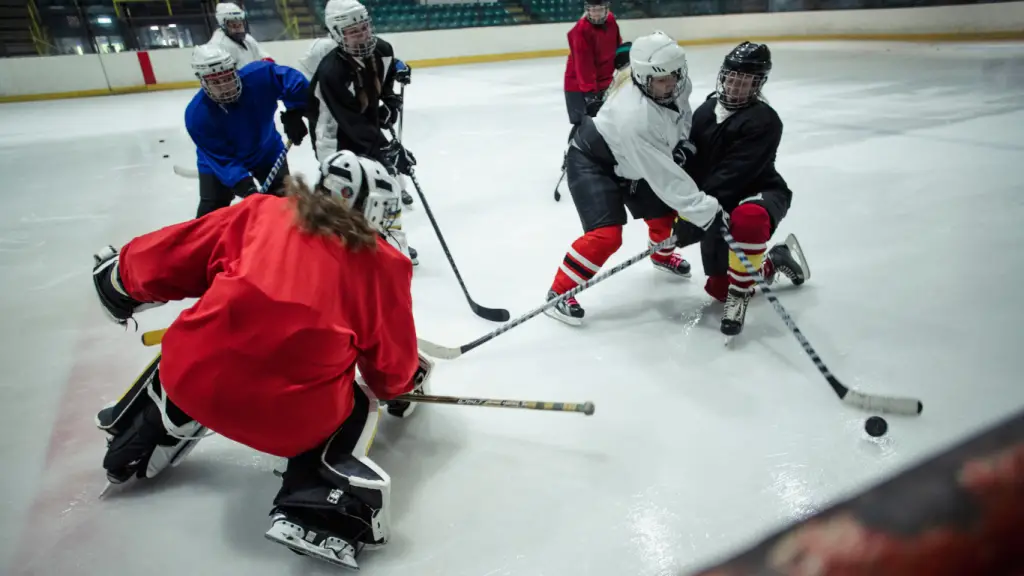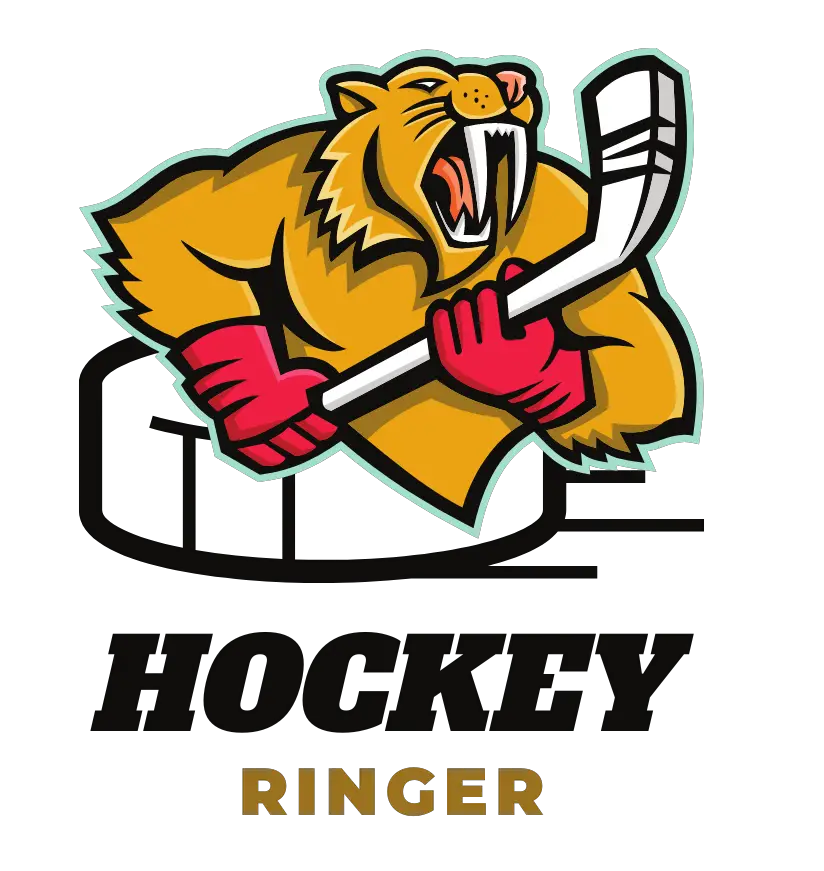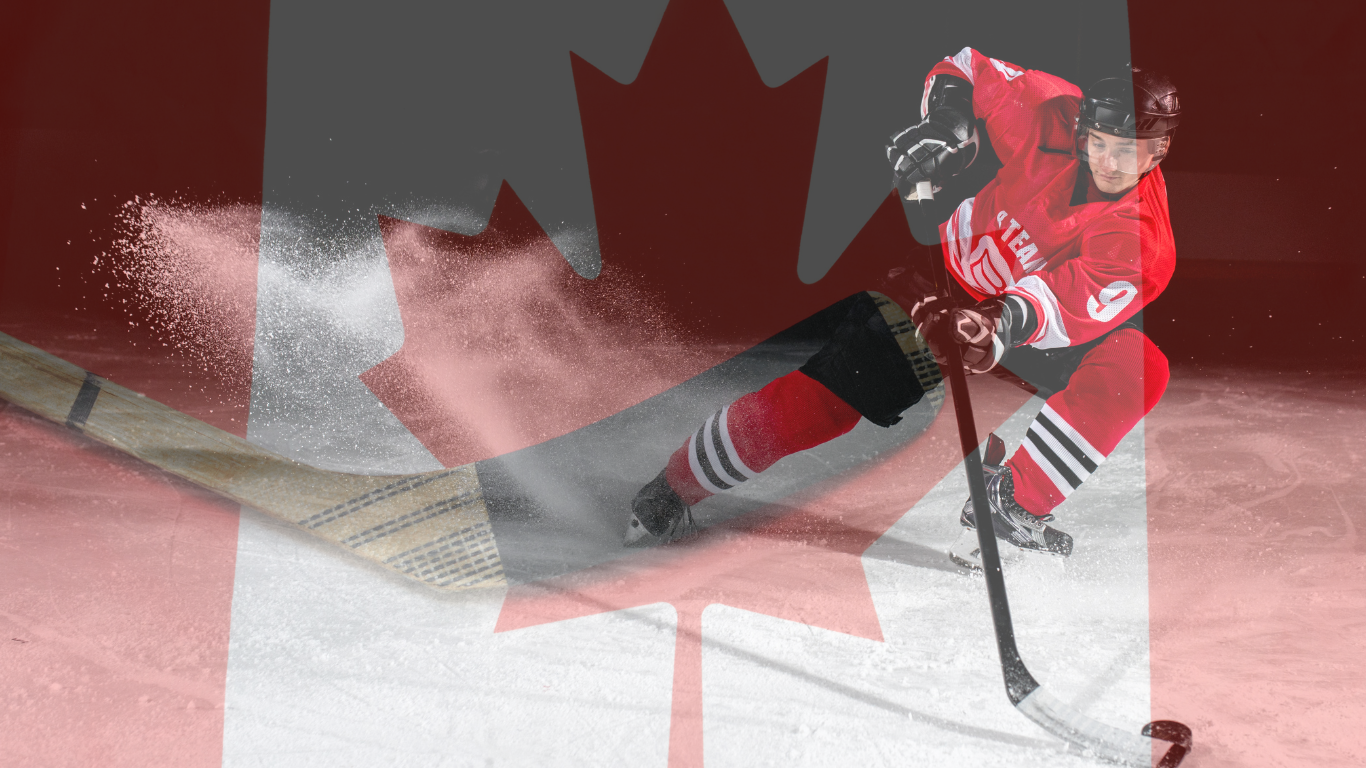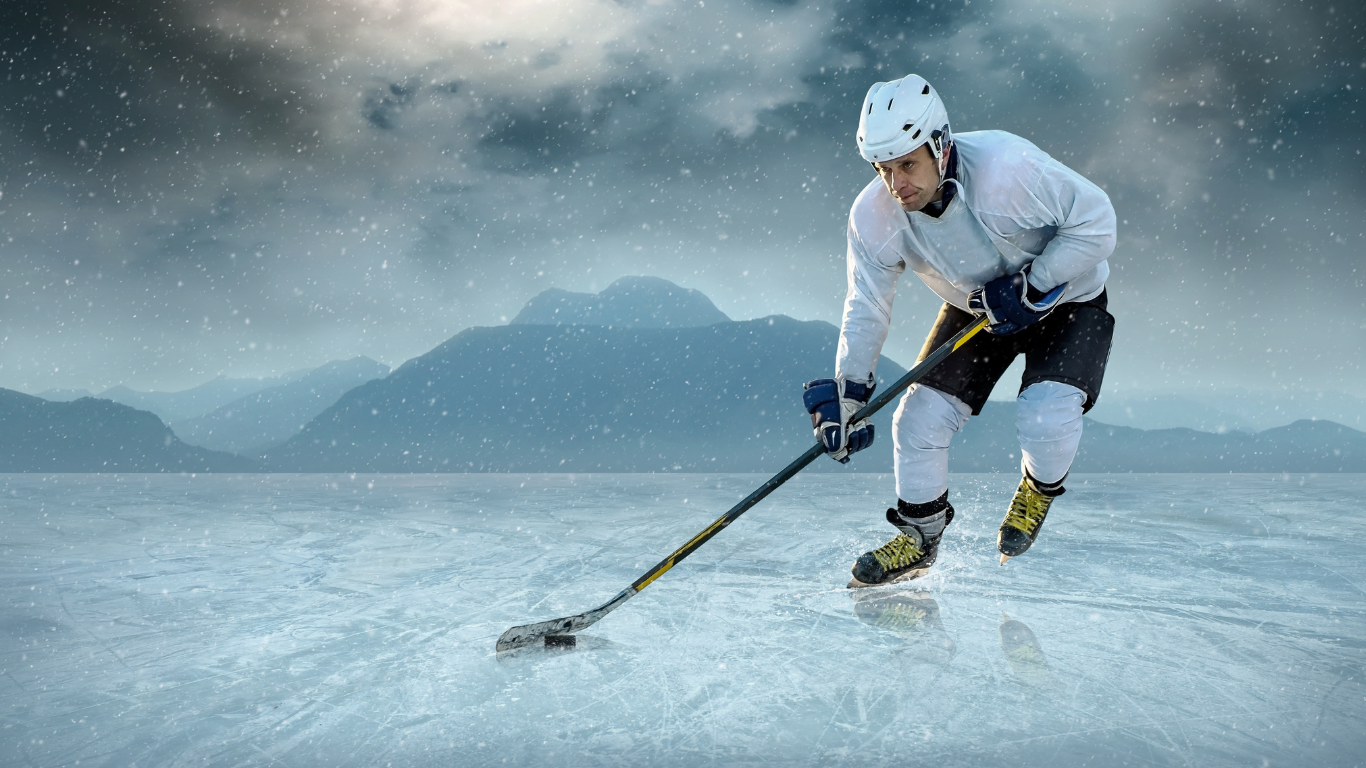Playing defense in ice hockey hinges on tactical awareness, teamwork, and quick reactions. Always be positionally aware, ensuring you stay between opponents and your goal while keeping your stick game-ready. Effective communication with teammates is crucial, as is controlling the central ice area to force adversaries to the edges.
Embrace physicality to disrupt opponents, clear the puck when needed, and work in tandem with fellow defensemen to cover all defensive areas. Amidst the game’s intensity, it’s essential to remain composed, avoiding rash decisions that could advantage the opposition.
Basics of Ice Hockey Defense

Role of Defensemen
In ice hockey, defensemen protect their team’s goal and prevent the opposing team from scoring. They play a crucial role in both offensive and defensive plays.
Defensemen must be able to skate well, have good stickhandling skills, and be able to make quick decisions under pressure. They are typically positioned in front of their own goal, but may also move up to support their team’s offense.
Ice Hockey Equipment
Players must wear specific equipment to protect themselves from injury to play ice hockey. Defensemen typically wear the same equipment as other players, but may have additional padding on their legs and hips to protect against checks from opposing players.
Some of the essential equipment for ice hockey includes:
- Skates
- Helmet
- Shoulder pads
- Elbow pads
- Shin guards
- Gloves
- Mouthguard
- Cup
Hockey Terminologies
It’s important to know some common hockey terminologies to understand ice hockey defense. Here are a few important terms to know:
- Forecheck: When players from the opposing team move into the offensive zone to pressure the defense and gain control of the puck.
- Backcheck: When players from the defensive team move back into their own zone to defend against the opposing team’s offense.
- Breakout: When the defense moves the puck out of their own zone and into the offensive zone to start an offensive play.
- Neutral zone trap: A defensive strategy where the defense positions themselves in the neutral zone to prevent the opposing team from entering the offensive zone.
Key Defensive Positions in Ice Hockey
Positioning in the Defensive Zone
In the defensive zone, it is crucial for the defensemen and the center to maintain proper positioning to prevent the opposing team from scoring. The defensemen should cover the blue line and the corners, while the center should cover the slot zone. The corner zone is also important to cover since it is a common area for the puck to be dumped in.
It is important for the defensemen to stay between the opposing team’s forwards and the net. They should also be aware of their positioning relative to their own goaltender. The center should also be aware of their positioning and should be ready to help the defensemen if necessary.
Positioning in the Neutral Zone
In the neutral zone, the defensemen should be positioned between the opposing team’s forwards and their own blue line.
This will help prevent the opposing team from quickly entering the offensive zone. The center should also be aware of their positioning and ready to support the defensemen if necessary.
Positioning in the Offensive Zone
The defensemen should maintain proper positioning in the offensive zone to prevent the opposing team from scoring on a potential breakaway. They should also be ready to jump into the play and help create scoring opportunities.
The center should cover the slot zone and be ready to receive a pass from the defensemen or forwards.
Defensive Skills and Techniques
Skating Skills
Skating is a crucial skill for any hockey player but especially important for defensemen. Good skating skills allow you to keep up with fast-moving forwards and quickly transition from offense to defense.
Some key skating skills for defensemen include:
- Backward skating: Defensemen spend a lot of time skating backward, so it’s important to be comfortable and efficient in this position.
- Lateral movement: Being able to move quickly from side to side is essential for defending against agile forwards.
- Stopping and starting: Quick stops and starts allow you to quickly change direction and keep up with the play.
Stick Skills
A defensemen’s stick is their primary tool for breaking up plays and preventing scoring chances. Good stick skills include:
- Poke checking: Using your stick to disrupt an opponent’s stick or puck.
- Stick lifting: Lifting an opponent’s stick to take away their ability to shoot or pass.
- Body checking with the stick: Using your stick to angle an opponent away from the puck or force them to the outside.
Body Positioning
Body positioning is key to effective defense. A good defensive posture allows you to stay between the opponent and the net, while also being in a position to block shots and passes. Some tips for good body positioning include:
- Maintaining a low center of gravity: This helps you stay balanced and agile.
- Keeping your feet shoulder-width apart: This provides a stable base for defending against opponents.
- Angling your body: Positioning your body to force opponents to the outside and away from the net.
Quick Decision Making
Defensemen need to be able to make quick decisions in order to effectively defend against the opposing team.
Some tips for making quick decisions include:
- Reading the play: Anticipating where the puck is going and what the opponent is likely to do.
- Communicating with teammates: Talking to your teammates to coordinate defensive strategies and coverages.
- Reacting quickly: Being able to quickly adjust your position or take action to defend against an opponent’s move.
Strategies for Ice Hockey Defense
Controlling the Pace of the Game
As a defenseman, it’s important to control the pace of the game. This means slowing down the opposing team’s offense and preventing them from gaining momentum. One way to do this is to maintain good gap control.
This means keeping a proper distance between yourself and the opposing player, so you can react quickly to their movements. Another way to control the pace of the game is to limit the opposing team’s passing lanes.
By cutting off their options, you can force them to make mistakes and turn over the puck.
Blocking Shots
Blocking shots is a crucial part of playing defense in ice hockey. To do this effectively, you need to have good positioning and timing. You should also be willing to sacrifice your body to make the block. When blocking shots, it’s important to stay on your feet and use your stick to disrupt the shot if possible.
If you do go down to block the shot, make sure you’re in a good position to get back up quickly and continue playing defense.
Intercepting and Passing
Intercepting passes is another important skill for defensemen. To do this, you need to have good anticipation and be able to read the play. Once you’ve intercepted the pass, it’s important to make a quick and accurate pass to your teammate.
This will allow your team to transition to offense and create scoring opportunities.
Defending Against Offensive Rushes
Defending against offensive rushes is a key part of playing defense in ice hockey. To do this effectively, you need to have good positioning and be able to skate backwards quickly. It’s also important to communicate with your teammates and switch players if necessary.
When defending against an offensive rush, it’s important to stay between the opposing player and the net and force them to the outside. This will limit their scoring opportunities and give your goaltender a better chance to make the save.
Advanced Defensive Tactics
Defensive Positioning
Defensive positioning is one of the most important aspects of playing defense in ice hockey. It involves positioning yourself in a way that allows you to defend against the opposing team’s attack while maintaining good ice coverage.
Proper defensive positioning can help you prevent scoring opportunities and force the opposing team to make mistakes.
Some tips for effective defensive positioning include:
- Keeping your body between the opposing player and the net
- Maintaining a low center of gravity to stay balanced and agile
- Staying aware of the location of your teammates and the opposing players
- Being ready to pivot and change direction quickly
Angling and Pressure
Angling and pressure are two techniques that can help you gain control of the puck and prevent the opposing team from scoring. Angling involves positioning yourself in a way that forces the opposing player to move in a certain direction, while pressure involves applying pressure to the opposing player to force them to make a mistake.
Some tips for effective angling and pressure include:
- Anticipating the opposing player’s movements and positioning yourself accordingly
- Using your body to block the opposing player’s path to the net
- Applying pressure to the opposing player to force them to make a mistake
- Maintaining good communication with your teammates to coordinate your defensive efforts
Poke Check Technique
The poke check is a defensive technique that involves using your stick to poke the puck away from the opposing player. It can effectively disrupt the opposing team’s attack and gain control of the puck.
Some tips for effective poke checking include:
- Timing your poke check carefully to avoid tripping the opposing player
- Keeping your stick close to the ice to make it harder for the opposing player to avoid the poke check
- Being ready to recover quickly if the poke check misses
Defending Against Power Play
Defending against a power play can be challenging, as the opposing team has a numerical advantage on the ice. However, there are some strategies that can help you defend effectively.
Some tips for defending against a power play include:
- Maintaining good defensive positioning to prevent the opposing team from getting good scoring opportunities
- Applying pressure to the opposing players to force them to make mistakes
- Being ready to block shots and passes to prevent the opposing team from scoring
- Communicating effectively with your teammates to coordinate your defensive efforts
Training for Ice Hockey Defense
Drills for Defensemen
To become a successful defenseman in ice hockey, it’s essential to practice drills that improve your skills and techniques. Here are some drills that can help you improve your defense skills:
- One-on-One: This drill involves a forward and a defenseman skating towards each other. The defenseman must prevent the forward from scoring while staying in control of the puck.
- Gap Control: In this drill, the defenseman must skate backward while maintaining a safe distance from the forward. The objective is to prevent the forward from getting too close to the net.
- Puck Retrieval: This drill focuses on the defenseman’s ability to retrieve the puck from the corners and boards quickly. The defenseman must then make a quick pass to a teammate to start the counter-attack.
Improving Hockey IQ
Hockey IQ refers to a player’s ability to anticipate and make the right decisions on the ice. To improve your hockey IQ as a defenseman, you can:
- Watch Professional Hockey: Watching professional hockey games can help you learn from the best and understand how they make decisions on the ice.
- Analyze Game Footage: Analyzing game footage of your own games and your opponents can help you identify areas where you need to improve.
- Communicate with Teammates: Good communication with your teammates can help you anticipate their moves and make better decisions on the ice.
Enhancing Agility and Speed
Defensemen need to be agile and fast to keep up with their opponents. Here are some ways to enhance your agility and speed:
- Skating Drills: Skating drills can help you improve your stride, speed, and agility on the ice.
- Strength Training: Strength training can help you build muscle and improve your overall speed and agility.
- Plyometric Exercises: Plyometric exercises, such as jumping and hopping, can help you develop explosive power and improve your agility.
By incorporating these drills and techniques into your training routine, you can improve your skills as a defenseman and become a valuable asset to your team.
Frequently Asked Questions
What are the primary responsibilities of a defenseman in ice hockey?
A defenseman’s primary responsibility is to defend their team’s net. They need to prevent the opposing team from scoring by blocking shots, intercepting passes, and disrupting the flow of the game. They also need to be able to move the puck up the ice to their forwards to create scoring opportunities.
How can a defenseman effectively protect their team’s net?
A defenseman can effectively protect their team’s net by staying between the opposing player and the net, using their body to block shots, and clearing the puck out of the zone. They also need to communicate with their teammates and anticipate the opposing team’s plays.
What are some common defensive strategies used in ice hockey?
Some common defensive strategies used in ice hockey include the neutral zone trap, forechecking, and backchecking. The neutral zone trap involves clogging up the neutral zone to prevent the opposing team from entering the offensive zone. Forechecking involves pressuring the opposing team in their own zone, while backchecking involves defending against the opposing team’s rush.
How can a defenseman anticipate and react to offensive plays?
A defenseman can anticipate and react to offensive plays by reading the play and positioning themselves accordingly. They need to be able to quickly transition from offense to defense and be aware of the opposing team’s strengths and weaknesses.
What are some key skills needed to play defense in ice hockey?
Some key skills needed to play defense in ice hockey include skating ability, agility, strength, and good hand-eye coordination. They also need to have good vision and be able to make quick decisions under pressure.
How can a defenseman contribute to their team’s overall success?
A defenseman can contribute to their team’s overall success by playing solid defense, moving the puck up the ice to their forwards, and contributing to the team’s offense when the opportunity arises. They also need to be a leader on the ice and communicate effectively with their teammates.





Leave a Reply